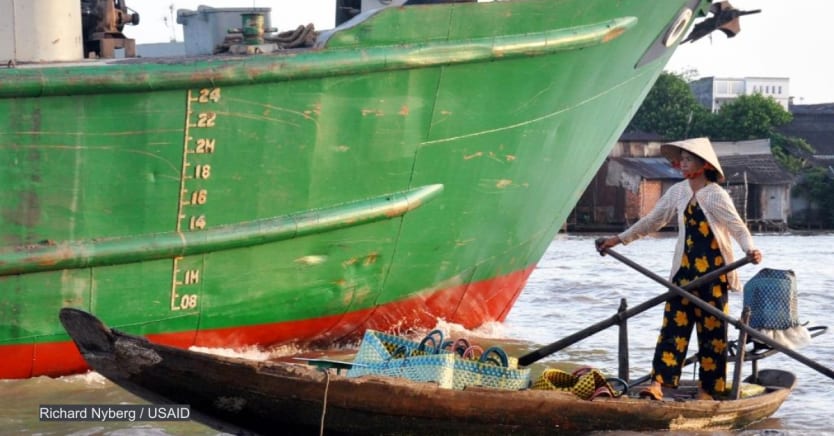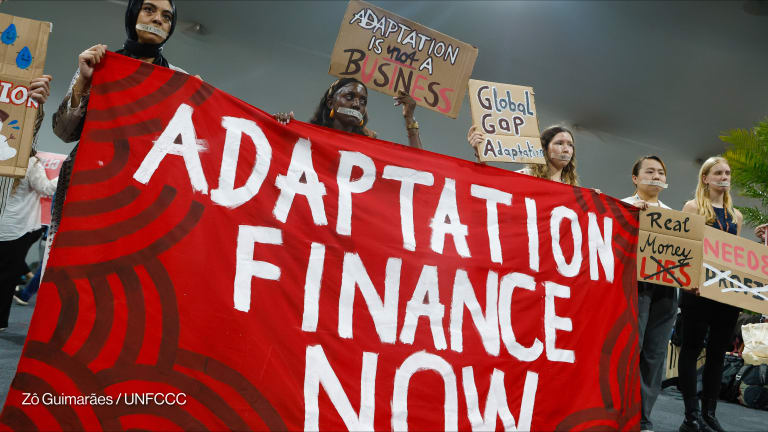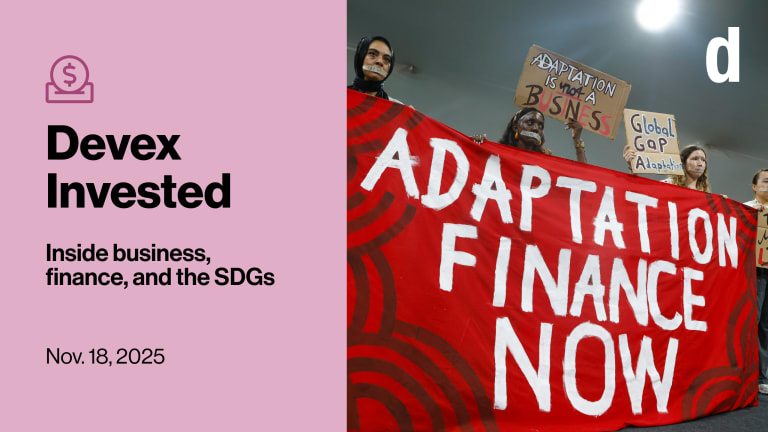
2020 alone saw the Philippines hit by an unprecedented four typhoons in just two months and widespread flooding in Vietnam and the Indonesian island of Sumatra. Not surprisingly, there has been significant attention paid to how countries in the region can plan and prepare for sudden-onset climate-connected natural disasters.
At the same time, far less attention is given to slow-onset climate hazards, such as sea level rise, which is increasing flood risk in low-lying cities like Jakarta and Ho Chi Minh City, or drought, which affected communities living along the Mekong River.
In Southeast Asia, it is often typhoons, floods, and extreme heat, all of which have become more frequent and intense due to climate change, that gets significant media and political attention.
“Intensive disasters, traditionally are the ones that grab the headlines,” Tiziana Bonapace, director of the disaster risk reduction division at the United Nations Economic and Social Commission for Asia and the Pacific told Devex. “But while the impacts are not as dramatic, they are much more insidious, and they are much more long term.”
In fact, slow-onset hazards already account for an estimated two-thirds of disaster-related economic losses in Asia-Pacific, according to UNESCAP’s disaster report in 2019. These hazards are beginning to be addressed regionally. But there is still a need for more data, research, and initiatives to increase social protection mechanisms for the most vulnerable populations, many of whom are already seeing increased stress and coping.
“There is actually a lot of work being done in connecting social protection with climate change,” said Minh Tran, a research associate at the Stockholm Environment Institute Asia. “But a lot of these approaches focus on sudden-onset hazards. There is a gap that needs to be addressed.”
Understanding the scale of slow-onset climate hazard risks
Slow-onset climate hazards refer to a wide range of creeping risks that are experienced by a region or community, gradually over a period of time. These can include drought, desertification, biodiversity loss, coastal erosion, and sea level rise.
UNESCAP’s report focused on understanding the impacts of one slow-onset hazard that impacts nearly every country in Southeast Asia: drought. It is a key driver of economic loss due partly to its disproportionate impact on agriculture, which many countries in the region, such as Vietnam, depend on for a large portion of their gross domestic product. Agriculture-dependent communities also are often the ones that have the least access to other opportunities or support.
The challenge, Bonapace said, is breaking the harsh cycle between poverty and inequality because poor people and those with agriculture-dependent livelihoods are affected disproportionately by droughts.
In a report released in January, SEI highlighted other hazards, sea level rise, and the role of social protection in building resilience to slow-onset risks more broadly.
“Sea level rise is perhaps the most visible impact of climate change, but then it’s also not as visible as we think,” Nicole Anschell, a research associate at SEI Asia, and co-author of the report told Devex. This is a particular concern due to large populations living in high-risk coastal urban areas such as Indonesia’s capital Jakarta, or the Mekong Delta in Vietnam.
“In Southeast Asia, we have a lot of big cities along the coast with a lot of marginalized communities relying on coastal livelihoods,” said Tran, who is a co-author of the report.
The importance of social protection
One of the challenges is that, because slow-onset hazards impact communities over long periods of time, it’s difficult to ascertain if a particular social, economic, or political outcome is due to the hazard. This is in stark contrast to sudden-onset events, which have clear identifiable costs.
“We need transformative social protection that goes beyond economic safety nets, and really addresses social exclusion and violations of rights that makes people vulnerable in the first place.”
— Minh Tran, research associate, Stockholm Environment Institute AsiaTraditional social protection mechanisms, such as insurance, focus on providing payments post-disaster. Similarly, aid money often flows to disaster-affected regions. For communities impacted by slow-onset hazards, new models are needed. Bonapace is hopeful about ex-ante insurance models that pay vulnerable people before they are impacted by slow-onset hazards.
“Instead of waiting for drought to happen and cause the damage, this insurance pays out to those who are going to experience drought before it actually happens, based on certain weather parameters,” said Bonapace.
This model has been tested with rice farmers in northwest Bangladesh, where it has shown positive results in helping farmers achieve higher yields and total rice production, according to a 2019 study published in the Journal of Development Economics.
“There’s a need to scale up, unfortunately, it’s still quite localized. But as data continues to be refined, and as our analytics become ever more precise, I think we will be able to predict and forecast in a much more powerful way,” Bonapace added.
Tran and Anschell would like to see an even broader approach, where social protection focuses on building long-term resilience and supporting adaptation measures to slow-onset hazards, something they feel is not yet happening enough. This could also address other risk factors that put communities at risk.
“We need transformative social protection,” said Tran, “that goes beyond economic safety nets, and really addresses social exclusion and violations of rights that makes people vulnerable in the first place.”
Emerging Regional Action
In November 2020, the Association of Southeast Asian Nations and UNESCAP launched an effort to increase drought resilience in Southeast Asia, with an explicit focus on transboundary hazards and a proactive, rather than responsive, approach.
“The development of drought management policies and plans at the national level must focus on drought prevention, mitigation, vulnerability reduction, planning, and preparedness, instead of dealing with or responding to aftermath losses and damages,” said Dato Lim Jock Hoi, secretary-general at ASEAN, in a press statement.
To Bonapace, this is a sign of the shift that is taking place across the region, as awareness of slow-onset hazards grows. She hopes it becomes a model for increased regional cooperation, funding, and action.
“I’m encouraged by the developments in ASEAN,” she said. “Both from the fact that there is much higher political attention that is being paid to the issue of slow-onset disasters, and by the level of inter-country cooperation.”
Expanding the data, research, and knowledge base about how slow-onset hazards will affect the region are also vital. While reports like UNESCAP’s and SEI Asia’s provided the groundwork for increased regional attention to slow-onset disasters, there is a specific need to focus on local contexts, Tran said.
“Sea level rise and other impacts of climate [change] show why social protection is really location-specific and works differently in different contexts. The next step is to get an understanding of that,” Tran said. They are interested in going to the local level, according to Tran, to better understand the needs, what’s working, and “ensuring that any policies are grounded in the local context.”








